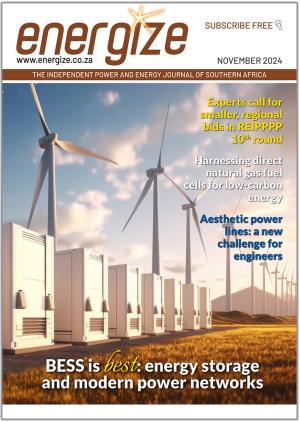By Joe Public
Having recently returned from a few weeks in New Zealand, where power interruptions were nonexistent, I was taken aback to find South Africa also enjoying a break from load shedding – and during winter!
Eskom has continued to release detailed reports showing sustained performance improvements. This positive development contradicts earlier claims, some by energy experts, suggesting that Eskom was beyond repair. It now seems plausible that focused action plans, the right expertise, and changes in power station management could restore Eskom’s fleet to a reasonable level of performance. Eskom’s new action plan is encouraging, and we can only hope it continues to deliver.
However, the possibility of future load shedding remains.
During the election period, there were claims and counterclaims about the role of renewables in load shedding. The wind industry argued that high wind performance prevented additional load shedding stages on several occasions. While it’s true that periods of high wind output could alleviate pressure on the grid, these were often followed by significant drops in wind production, potentially worsening load shedding if wind power was factored in.
Conversely, a government official attributed additional load shedding to failures in the solar sector, a claim disputed by the solar industry. Eskom’s data shows that utility-scale solar plants can experience up to a 60% drop in peak daily output over consecutive days, potentially impacting load shedding. The solar industry, however, highlighted periods of excellent performance, akin to rewarding a system for functioning as expected. Despite these debates, it’s understood that Eskom does not factor variable renewables into load shedding decisions, making these arguments largely moot.
A less discussed factor is the growing rooftop solar market, which may impact load shedding indirectly. While rooftop solar does not add to grid capacity, it reduces grid demand. However, if utility-scale solar output declines, rooftop solar could also be affected, potentially increasing grid load by up to 1 GW, which could influence load shedding.
Looking ahead, the immediate priority is to stabilise Eskom and enhance its fleet reliability. Expanding the network is also essential, with dispatchable generation being a practical approach. As consumers increasingly generate their own power, the utility’s role in providing consistent power becomes even more critical.
The future power system must be environmentally friendly, narrowing the technology options for grid extension. While renewable energy is often touted as the solution, its inherent variability means it cannot provide the dispatchable power required. This reality is reflected in global bulk electricity storage projects designed to address renewable variability and grid instability.
Eskom has recently connected its first dispatchable wind/solar system, indicating a shift in understanding the need for storage. New renewable energy systems should be paired with appropriate storage solutions, either on-site or connected to the grid.
Moreover, the transition from a renewable-based future to a carbon-free and net-zero carbon future has shifted focus toward nuclear power. Despite opposition, nuclear energy is experiencing a global resurgence. Countries like China, India, and several European nations are investing heavily in nuclear reactors, recognizing their role in providing reliable baseload power.
South Africa, with its latent indigenous nuclear industry, could benefit from examining successful nuclear programs abroad. As other nations invest in long-lifetime, reliable nuclear units, South Africa might consider following suit to secure its long-term energy future.















